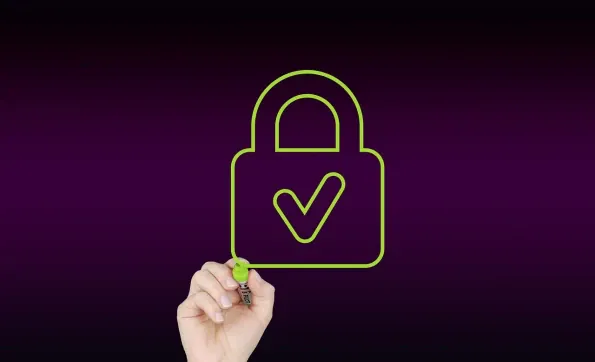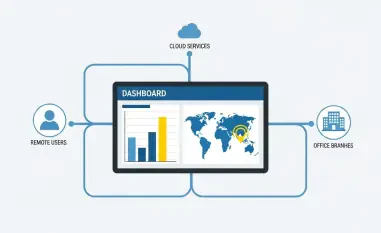In today’s digital landscape, mobile devices have become indispensable tools for both personal and professional use. However, their ubiquity also makes them prime targets for cyberattacks. Despite this, many organizations still fail to recognize mobile devices as critical endpoints in their cybersecurity strategies. This oversight can lead to significant vulnerabilities, as evidenced by high-profile breaches like the one experienced by MGM Resorts.
The MGM Resorts Breach: A Wake-Up Call
The Incident and Its Implications
The cyberattack on MGM Resorts serves as a stark reminder of the dangers of neglecting mobile device security. Attackers managed to breach the company’s network by impersonating an employee and convincing the IT helpdesk to reset mobile device credentials. This incident highlights the ease with which mobile devices can be exploited if not properly secured. Consequently, the breach extended beyond mobile devices, compromising MGM Resorts’ entire network and causing substantial operational and financial repercussions.
This incident underscores the dire consequences of not treating mobile devices as crucial endpoints in cybersecurity frameworks. When mobile devices are overlooked, the attack surface remains exposed, allowing threat actors to exploit vulnerabilities and gain unauthorized access to sensitive information. The MGM breach serves as a significant case study for organizations worldwide, illustrating the immense risks associated with underestimating the importance of mobile device security.
Lessons Learned from MGM Resorts
The MGM breach underscores the need for organizations to classify mobile devices as endpoints. By doing so, they can allocate the necessary resources and implement robust security measures to protect these devices. Ignoring mobile devices as endpoints leaves a gaping hole in an organization’s cybersecurity defenses. Recognizing mobile devices as endpoints is not just about administrative adjustments; it involves cultural and procedural shifts that fundamentally impact how security is approached and prioritized.
Companies must adopt a proactive stance on mobile security, integrating it seamlessly into their wider cybersecurity strategy. This means investing in comprehensive mobile device management (MDM) tools, enforcing stringent security policies, and conducting regular audits and assessments. Furthermore, training and educating employees on the crucial role mobile devices play in the company’s cybersecurity posture is essential to fostering a security-conscious culture.
The Rapid Evolution of Mobile Threats
Emerging Mobile Threats
Mobile threats are evolving at an alarming rate, with new attack vectors constantly emerging. These include legitimate channels such as app stores, system updates, SMS, email, and Wi-Fi networks. Advanced mobile spyware like Pegasus, Hermit, and Predator poses significant risks to both personal and corporate data. Unlike traditional malware, these sophisticated tools can operate stealthily, extracting critical information without the user’s knowledge. Such advanced threats highlight the need for organizations to stay ahead of the curve by continuously updating and enhancing their mobile security strategies.
Additionally, attackers are leveraging machine learning and artificial intelligence to develop more sophisticated mobile threats. These technologies enable the creation of highly targeted attacks that can bypass conventional security measures. Weaponizing everyday apps and system functions further complicates the detection and response to these threats. The rapidly changing landscape necessitates that cybersecurity teams stay vigilant and adaptable, embracing new technologies to counteract emerging threats effectively.
The Growing Sophistication of Mobile Malware
The sophistication of mobile malware has increased dramatically, making it more challenging to detect and mitigate. Attackers are leveraging advanced techniques to bypass traditional security measures, necessitating a proactive and comprehensive approach to mobile device security. This includes utilizing heuristic and behavioral analysis, anomaly detection, and zero-day threat management to identify and neutralize threats before they can cause damage. Furthermore, mobile malware often exploits zero-day vulnerabilities that haven’t yet been patched, emphasizing the need for timely updates and patches.
To compound this issue, cybercriminals are also employing social engineering tactics, exploiting human psychology to gain access to mobile devices. These tactics may involve phishing emails, malicious links, and spoofed messages that trick users into downloading malware or revealing sensitive information. Organizations must, therefore, combine technical defenses with user education to build robust layers of security. Training users to recognize and respond appropriately to phishing attempts and suspicious activities is critical in combating the evolving threat landscape.
Challenges of BYOD Programs
The Prevalence of BYOD
Bring your own device (BYOD) programs are becoming increasingly common, with 82% of organizations allowing employees to use personal devices for work. However, this trend presents significant security challenges, as personal devices often lack the necessary security controls. Employees may not follow the same security protocols on personal devices as they would on company-owned equipment, creating vulnerabilities. The decentralized nature of BYOD also complicates IT’s ability to monitor and manage device security effectively, posing a significant risk to sensitive corporate data.
Furthermore, the heterogeneity of personal devices means varying operating systems, software versions, and configurations, increasing the complexity of implementing uniform security measures. As a result, BYOD environments can become a maze of unpredictable security landscapes, which IT departments must navigate carefully. To manage this, organizations need to establish clear and enforceable BYOD policies, delineating the exact security requirements and responsibilities for employees using personal devices for work purposes.
The Security Gap in BYOD
Despite the widespread adoption of BYOD, only 41% of organizations have comprehensive mobile device management tools in place. This discrepancy highlights a significant gap in mobile security preparedness, leaving sensitive data vulnerable to breaches. Without robust management tools, companies struggle to enforce security policies such as encryption, remote wipe capabilities, and secure access controls on personal devices. The lack of such tools not only increases the risk of data leakage but also complicates compliance with regulatory standards.
Closing this security gap requires a multifaceted approach that includes deploying advanced MDM solutions, fostering a culture of security awareness, and implementing strict access control policies. MDM solutions provide the necessary framework for managing and securing personal devices, from enforcing passwords and data encryption to remotely locking or wiping lost or stolen devices. Complementing this with regular cybersecurity training ensures that employees understand their role in protecting corporate data and the appropriate steps to take in the event of a security incident.
Legal and Privacy Complications
Privacy Regulations and Mobile Security
Modern privacy regulations, such as the California Consumer Privacy Act (CCPA), complicate mobile security efforts. Employees have the legal right to refuse device inspection, creating a dilemma for security teams responsible for protecting data on devices they cannot control. This challenge is further pronounced in BYOD environments where personal and corporate data co-exist on the same device. The inability to inspect and manage these devices fully can leave organizations exposed to potential legal liabilities and cybersecurity risks.
Balancing compliance with privacy laws and maintaining robust mobile security requires organizations to adopt innovative approaches. For instance, containerization can be employed to separate personal data from corporate data, allowing IT teams to manage and secure business information without infringing on personal privacy. This method creates virtual containers that house corporate apps and data, ensuring that only those segments of the device are subject to security policies and monitoring, thus adhering to privacy regulations.
Balancing Security and Privacy
Organizations must find a balance between security and privacy, particularly in environments with BYOD policies. This requires progressive policy formulation and technical controls that secure corporate data without infringing on personal privacy rights. For example, transparent communication with employees about how their data is accessed and protected is pivotal in achieving this balance. Clear and concise BYOD agreements should outline the scope of monitoring and security measures, ensuring employees are informed and compliant.
Moreover, implementing privacy-preserving security technologies such as differential privacy, where specific information is obscured or anonymized, can help mitigate privacy concerns while maintaining security. Regular audits and reviews of security policies and practices are crucial in adapting to evolving privacy regulations and emerging security threats. Creating a security culture that values both robust protection and respect for personal privacy encourages trust and enhances overall cybersecurity resilience in the digital workplace.
Expanding Endpoint Definitions
Redefining Endpoints
To effectively secure mobile devices, organizations must expand their definition of endpoints to include them explicitly. This change is not merely administrative but is essential for driving resource allocation and investment into mobile security. Recognizing mobile devices as endpoints means they will receive the same level of protection and attention as traditional computing devices like desktops and servers. This paradigm shift is crucial for addressing modern cybersecurity challenges, given the increasing reliance on mobile devices for accessing and storing sensitive information.
Expanding endpoint definitions also involves integrating mobile security into the broader IT infrastructure. Organizations need to ensure that mobile devices are included in network security protocols, threat detection systems, and incident response plans. This holistic approach ensures a unified security strategy that comprehensively addresses all potential attack vectors. By embedding mobile security into the organization’s cybersecurity fabric, companies can safeguard their data and operations more effectively against the sophisticated and evolving threat landscape.
Establishing Security Baselines
By broadening the definition of endpoints, companies can establish clear security baselines and incident response procedures tailored to the unique nature of mobile devices. This approach ensures that mobile devices receive the same level of protection as traditional computing endpoints. Security baselines should include standard configurations, mandatory security controls, and regular security assessments. These measures help in maintaining consistency and reliability in the security posture across all endpoints, including mobile devices.
Incident response procedures must also be adapted to account for the mobility and variability inherent in mobile devices. This includes developing specific protocols for handling lost or stolen devices, remote data wipes, and isolating compromised devices from the network. Establishing these baselines and procedures creates a robust framework that enhances the organization’s capability to detect, respond to, and recover from mobile security incidents promptly and effectively.
Adopting Zero-Trust Architecture
The Principles of Zero-Trust
Embracing a zero-trust architecture is crucial for mobile device security. This approach treats mobile devices as untrusted by default, accounting for frequent transitions between secure and insecure networks and the inherent risks of accessing corporate resources via mobile devices. Zero-trust principles advocate for continuous verification of all users and devices attempting to access network resources, irrespective of their location or the nature of the device. This rigorous verification process ensures that only authorized entities can gain access, significantly reducing the risk of unauthorized intrusions.
The implementation of zero-trust architecture involves leveraging advanced technologies such as multi-factor authentication (MFA), encryption, and network segmentation. These technologies enhance the security framework by adding layers of protection that are difficult for attackers to bypass. Additionally, zero-trust requires sophisticated monitoring tools to scrutinize user behaviors and detect anomalies in real time, providing an added security layer in mobile environments.
Implementing Zero-Trust for Mobile Devices
Implementing a zero-trust architecture involves continuous monitoring and verification of mobile devices, ensuring that only authorized users and devices can access sensitive data. This proactive approach helps mitigate the risks associated with mobile device usage. Mobile device management tools and security policies must align with zero-trust principles, enforcing strict access controls, automatic threat detection, and immediate response mechanisms. These measures ensure that potential threats are identified and neutralized before they can compromise the system.
Additionally, zero-trust mandates the use of secure communication channels, enforcing encryption for all data transmitted to and from mobile devices. Regular software updates and patch management are also critical components of zero-trust, as they address known vulnerabilities and protect against emerging threats. By adopting zero-trust architecture, organizations can transform their mobile security strategy, making it more resilient and capable of addressing the dynamic threat landscape that targets mobile endpoints.
Policy Evolution and Training
Updating BYOD Agreements
Organizations must update their BYOD agreements to reflect modern security requirements while respecting privacy. These agreements should outline the responsibilities of both the organization and employees in maintaining mobile device security. Clear guidelines on acceptable use, mandatory security measures such as encryption and password policies, and procedures for reporting lost or stolen devices are essential components of a comprehensive BYOD agreement. Such agreements must also highlight the consequences of violating security policies to ensure compliance.
To foster employee buy-in, organizations should involve them in the policy formulation process, gathering feedback and addressing concerns regarding privacy and usability. This inclusive approach helps create a sense of ownership and responsibility among employees, leading to better adherence to security practices. Regularly reviewing and updating BYOD agreements to incorporate feedback and respond to emerging threats ensures that the policies remain relevant and effective in protecting both organizational and personal data.
Developing Mobile-Specific Security Training
Robust mobile-specific security training programs are essential for educating employees about the risks associated with mobile devices. These programs should cover best practices for securing mobile devices and recognizing potential threats. Training should include practical scenarios and examples of common mobile threats such as phishing attacks, insecure networks, and malware infections. Additionally, educating employees on the importance of maintaining up-to-date software and reporting suspicious activities can significantly enhance the organization’s overall security posture.
Interactive and engaging training sessions, coupled with periodic refreshers and assessments, help reinforce security concepts and encourage responsible use of mobile devices. Leveraging technology to deliver training through e-learning modules, webinars, and mobile apps ensures that the material is accessible and convenient for all employees. By investing in comprehensive and ongoing mobile security training, organizations can build a workforce that is vigilant, informed, and capable of protecting sensitive data against an array of mobile threats.
Privacy-Aware Incident Response
In today’s highly digital world, mobile devices have become essential tools for both personal and professional activities. Their convenience and broad usage, however, also make them prime targets for cyberattacks. Despite the clear risk, many organizations still fail to properly recognize and address mobile devices as critical endpoints in their cybersecurity strategies. This significant oversight can leave companies vulnerable to attacks, as illustrated by high-profile breaches like the one suffered by MGM Resorts. Such incidents underscore the need for robust security measures for mobile devices. Companies must begin to incorporate mobile devices into their cybersecurity frameworks to ensure comprehensive protection. This should include regular security updates, employee training on mobile security best practices, and the deployment of advanced security solutions specifically designed for mobile environments. By doing so, organizations can better safeguard their sensitive data and maintain the integrity of their operations in an increasingly mobile-dependent world.













